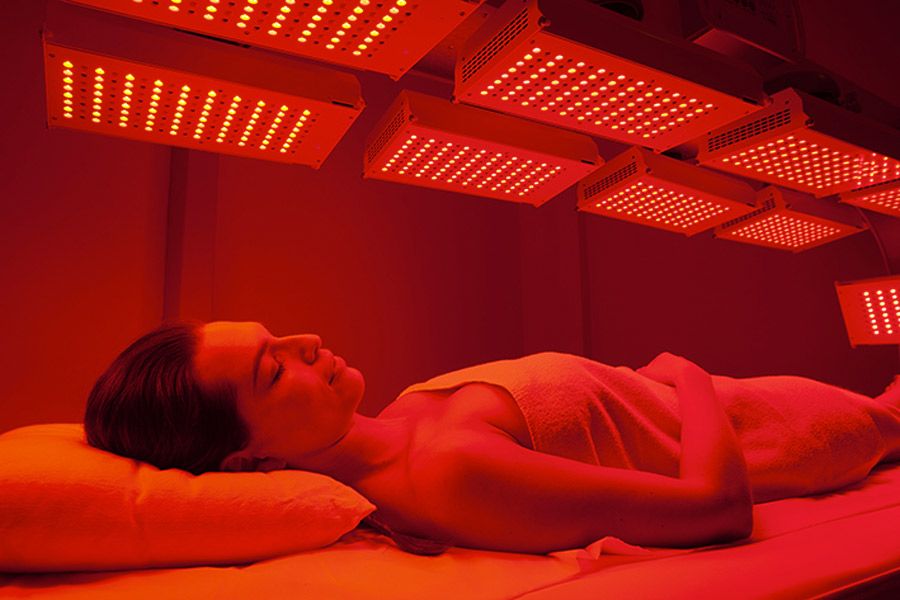The benefits of light on the health of the body and mind have been recognized since the dawn of time: traces of this type of therapy can be found as far back as ancient Egypt, in Indian Ayurvedic medicine and in the empires of China and Rome. The evolution of technology has made it possible to reproduce light in an artificial way, so that light therapy can be practiced today in all seasons and in all places. They have been used for several decades in the medical sector and are still the subject of much research, leading to numerous therapeutic innovations.
Among the many variations of light-based treatments, there are phototherapy, light therapy and photobiomodulation: 3 treatment technologies whose main characteristics, common points and differences are presented below.
Phototherapy consists in imitating all the different colors and wavelengths of the light spectrum using LED lights to treat various pathologies.

For example, face and body phototherapy uses UVA and UVB light to treat skin diseases such as psoriasis and eczema, and blue light to treat infant jaundice.
Recently developed, photodynamic therapy consists of transmitting to the patient photosensitive molecules that are activated only by light scattered at a specific wavelength. Photodynamic therapy is now used to eliminate cancerous and precancerous cells, as well as in the treatment of degenerative diseases such as Alzheimer's.
Light therapy is a branch of phototherapy. Also called heliotherapy, from the Greek word "Helios" meaning sun, this technique consists of treating people with sunlight.

Light therapy lamps mimic the intense white light of the sun, but without the infrared or ultraviolet radiation. This so-called "broad spectrum" light enters the body through the eyes and is transformed into electrical signals that are sent to the brain where they influence neurotransmitters, including melatonin.
Light therapy is mainly used to treat disorders related to the internal biological clock. For example, it regulates the circadian rhythm, which regulates the time of sleep and wakefulness, influencing hormone production and appetite. It is also very effective in fighting against seasonal depression due to the lack of light.
Over time and through experimentation, other ways of using light therapy have been developed: it is now common to apply color filters to white light to vary its effects. This can strengthen the immune system, alleviate chronic pain such as arthritis, or accelerate cell growth to treat wounds, injuries and improve healing.
These new applications have given rise to light therapy for the face, which helps prevent cell aging and the appearance of wrinkles.
Photobiomodulation has been used for more than 30 years in the medical field and is still the subject of much research. It is derived from phototherapy and laser technology.

This technology consists in reproducing the interactions of natural light with LED lights of different intensities, colors and wavelengths. Photobiomodulation works like photosynthesis in plants: the biochemical interaction of light and cells triggers various metabolic reactions involved in cell regeneration. This non-invasive treatment technique is used in the medical field to treat inflammatory conditions, degenerative diseases and pain, or to reduce fatigue and increase the performance of athletes. PhotoBioModulation is also used to treat skin inflammations (eczema, rosacea) and to erase wrinkles and fine lines.
After much research, we decided to join forces with a French specialist in medical LED equipment to design our PhotoBioModulation devices and make this technology available to Beauty and Wellness professionals.